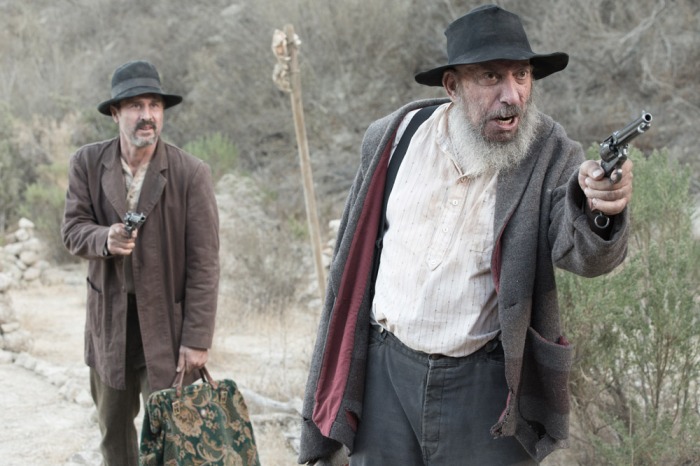| Home | Reviews | About | Contact Us |
(30/6/16)
“It replicates the endless void of human nature”
Elem Klimov’s rendition of the Byelorussian massacre, which took place during the Second World War, probably renders as one of the most terrifyingly accurate portrayals of war ever brought to film. Various movie outlets rightly deem “Come and See” a periodic war drama, but this suffix can also go alongside the categories of horror or psychological; terms which are ultimately spurred with an invoking sense of trauma and disturbance for the viewer. Spielberg was often noted to present screenings of the film prior to the releases of both Schindler’s List (1993) and Saving Private Ryan (1998), two grandiose Hollywood war movies which ruptured Western cinema as it merited the exposition of brutality and somewhat pointlessness of war – Spielberg certainly monopolized the ‘anti-war’ genre ever since his film-making inception, as did Kubrick for the latter part of the 20th century. “Come and See” certainly compliments those qualities, if not more, and also likens the attitudes of Apocalypse Now (1979) and Full Metal Jacket (1987). Apocalypse Now exemplifies the unbearable destruction of nature and the gradual dehumanization of man through the experiences of Captain Willard (Martin Sheen’s character), whereas Full Metal Jacket focuses on the study of man and their activities, morals, and ethos’. “Come and See” admires and tinkers with such ideas throughout the picture, redeeming certain traits and characteristics that mainstream Western cinema filmmakers wouldn’t even dare to experiment with.
“Come and See” follows the story of protagonists Flyora and Glasha, two young Belorussians who are conscripted to fight for the Soviet partisans after Flyora finds an old rifle near his home. After the reluctance to undertake such a dangerous role, the harsh and forceful demeanor of the partisans subject Flyora to fight for them, henceforth beginning our journey into 1943 Byelorussia. It is from this moment onward where we are seared into a first-hand account of the Nazi German occupation of Byelorussia, depicting the journey of Flyora’s disillusionment with the world and his life, deterring into bouts of denial and near insanity. His surge of combat stress derives from the lack of preparation for war and witnessing the genocide of his own people. It is essentially an Eastern European holocaust. The feature also somewhat delves into instances of pseudo-hallucinations, as if what we are seeing isn’t a reality; just a bad trip, a nightmare. This can be considered when Flyora and Glasha first meet, as well as Flyora’s eventual spasm into denial as a result from stressful events.
The use of cinematography also glorifies this state of verging insanity by using the constant motif of head-shots, which provides us thought to analyse the well-being of our characters. Klimov can certainly leash out his actors and use them to their full extent. For example, Aleksei Kravchenko, the actor who portrays Flyora, often pours resemblance to zombie-like figures as a result from how horrific the environment is. The camera plays in an uneasy and unpredictable manner, noticeably in pivotal moments such as the infamous bog scene, which disturbingly seems everlasting. Coupled with this sort of scene is the use of music, or lack of. Despite not having a concrete score, the music, created mostly by Oleg Yanchenko, presents itself in an unshaped manner, relying itself on horror-esque soundscapes, drones, and ambience. This bodes resonance to the works of Krysztof Penderecki, who is credited for some of the music in The Shining (1980), often spurring up unconventional and avant-garde methods.
It is the fusion of frightening acting, apprehensive cinematography and haunting music which creates this podium of sheer and utter horror of a movie. If I could provide advice to aspiring horror writers or filmmakers, it would be without any hesitation to recommend war films for inspiration as they warrant themselves as perfect examples to study the human mind and condition. “Come and See” does not romanticize war. It doesn’t have a hero, nor a narrative. It replicates the endless void of human nature and questions why such things happen to the innocent and even the barbaric. An interesting moment occurs during a scene which gestures character study and the psychology of distressed humans. It panders on a metaphor, as if certain things should never happen and you wish you could just roll back time to change the course of history. Techniques like this should be relished in today’s cinema as it bears open discussion and thought. I’ve always said James Cameron made films that people want to see, and that Stanley Kubrick made films that people need to see. “Come and See” is without a doubt a film that fits into the latter, regardless of your preference when it comes to subject matter. It’s meant to replicate a feeling of subordination of the human existence – we are merely insignificant beings that are willing to harm one another for our own personal gains and motives during the minuscule time we have on Earth.
“Come and See” wraps itself up to be one of the most defining movies I have seen as of yet. It isn’t politically correct, nor is it afraid to delve into a terrifying context. War films will continue to be born, but “Come and See” will detain itself to be the mother of such things. Soviet cinema is certainly an interesting one as it proves itself different to the Western medium – Tarkovsky, for instance, certainly reinforces this claim. Klimnov also justifies the exuberance of it.
Matthew Alfrey
| Home | Reviews | About | Contact Us |









